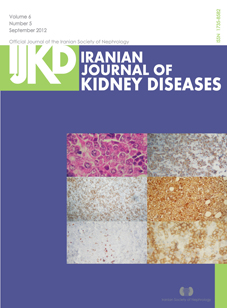Effect of Herbal Medicine Achillea Millefolium on Plasma Nitrite and Nitrate Levels in Patients With Chronic Kidney Disease: A Preliminary Study
Abstract
Introduction. Increased plasma nitric oxide concentration has been supposed as one of the possible mechanisms of bleeding tendency in patients who suffer chronic kidney disease. Nitric oxide-scavenging properties have been reported with some Achillea species. This study was designed to find any possible effect of Achillea millefolium on plasma nitric oxide concentration in these patients.
Materials and Methods. Thirty-one chronic kidney disease patients were included in this randomized controlled trial, of whom16 received 1.5 g of powdered A millefolium flower 3 days a week for 2 months, and 15 received placebo for the same period. Plasma samples were collected before and after the study period to estimate the effect of A millefolium on plasma nitric oxide metabolites (nitrite and nitrate).
Results. Although not statistically significant, plasma nitrite and nitrate concentrations decreased after 2 months' administration of A millefolium (0.82 ± 0.51 µmol/L to 0.63 ± 0.42 µmol/L and 50.55 ± 17.92 µmol/L to 44.09 ± 17.49 µmole/L, respectively). These concentrations were slightly increased in the placebo group after the study period.
Conclusions. Countercurrent to the placebo group, plasma nitric oxide metabolites were marginally decreased after A millefolium administration in chronic kidney disease patients. Higher doses or longer duration of plant administration may make these changes more significant.


